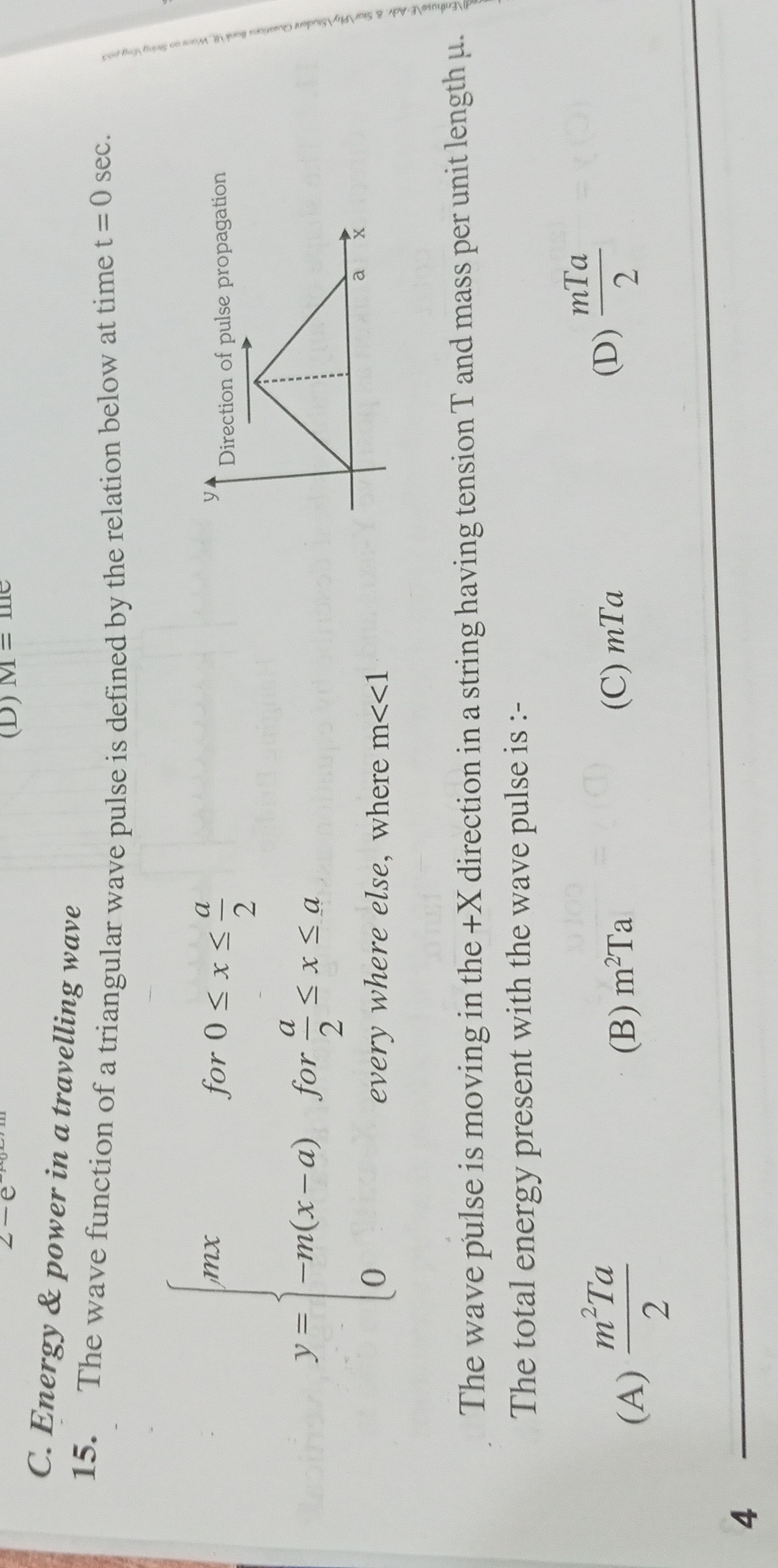Question
Question: The wave function of a triangular wave pulse is defined by the relation below at time t = 0 sec. $$...
The wave function of a triangular wave pulse is defined by the relation below at time t = 0 sec.
y=⎩⎨⎧mx−m(x−a)0for 0≤x≤2afor 2a≤x≤aevery where else, where m<<1The wave pulse is moving in the +X direction in a string having tension T and mass per unit length μ. The total energy present with the wave pulse is :-

2m2Ta
m2Ta
mTa
2mTa
m2Ta
Solution
The wave function of the triangular wave pulse at time t=0 is given by:
y(x,0)=⎩⎨⎧mx−m(x−a)0for 0≤x≤2afor 2a≤x≤aevery where elseThe wave pulse is moving in the +X direction. For a travelling wave y(x,t)=f(x−vt), the total energy is the sum of the kinetic and potential energies. The kinetic energy density is 21μ(∂t∂y)2 and the potential energy density is 21T(∂x∂y)2. For a travelling wave, the kinetic energy density is equal to the potential energy density at every point. This can be shown as follows: ∂t∂y=−vf′(x−vt) and ∂x∂y=f′(x−vt). So (∂t∂y)2=v2(f′(x−vt))2=v2(∂x∂y)2. Since the wave speed v=T/μ, we have v2=T/μ. Thus, 21μ(∂t∂y)2=21μμT(∂x∂y)2=21T(∂x∂y)2. The total energy density is the sum of the kinetic and potential energy densities, which is 2×21T(∂x∂y)2=T(∂x∂y)2. The total energy of the wave pulse is the integral of the energy density over the region where the wave exists: E=∫T(∂x∂y)2dx. We need to calculate ∂x∂y at t=0. This is the slope of the wave function y(x,0). For 0≤x<2a, ∂x∂y=dxd(mx)=m. For 2a<x≤a, ∂x∂y=dxd(−m(x−a))=−m. The slope is not defined at x=a/2, but this is a single point and does not affect the integral. So, (∂x∂y)2=m2 for 0≤x≤a, except at x=a/2. The total energy is the integral over the region 0≤x≤a: E=∫0aT(∂x∂y)2dx=∫0aTm2dx. Since T and m2 are constants with respect to x in the region 0≤x≤a, we have: E=Tm2∫0adx=Tm2[x]0a=Tm2(a−0)=Tm2a.
The total energy present with the wave pulse is m2Ta.
